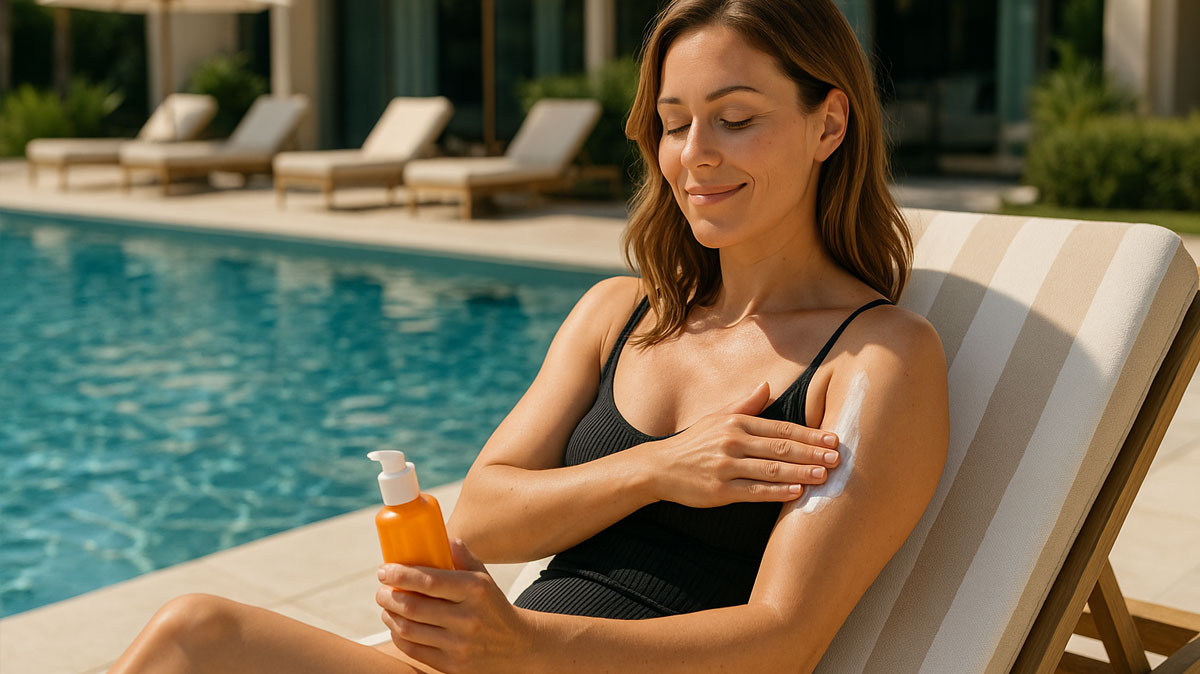
Protecting your skin from the sun’s harmful rays is essential—especially during long pool days or outdoor summer fun. In 2025, new research has shed light on which sunscreens work best, which ingredients to approach with caution, and how to make the safest choice for both children and adults. This guide breaks down everything you need to know based on the latest findings in sunscreen effectiveness and safety.
Most Effective Sunscreens: What Actually Works and Why
Effectiveness in sunscreen is determined by two primary factors: broad-spectrum coverage and photostability.
- Broad-spectrum protection means the sunscreen guards against both UVB rays, which cause sunburn, and UVA rays, which contribute to skin aging and increase the risk of skin cancer.
- Photostability refers to how well the active ingredients in a sunscreen maintain their effectiveness when exposed to sunlight. If they break down quickly in UV light, they lose protective power—even during application.
Two Main Sunscreen Types and Their Strengths:
- Mineral (Physical) Sunscreens – these use active ingredients like zinc oxide or titanium dioxide to reflect UV radiation. They are considered highly effective due to:
- Natural broad-spectrum protection against both UVA and UVB.
- Photostability: Unlike many chemical filters, these ingredients do not degrade under sun exposure.
- Immediate effectiveness upon application—no waiting required.
- Stabilized Chemical Sunscreens – some modern chemical formulations can be highly effective if properly stabilized. These sunscreens work by absorbing UV rays and converting them into heat. However, older versions often degraded quickly in sunlight.
- Well-formulated chemical sunscreens now include stabilizers like octocrylene, bemotrizinol (Tinosorb S), and diethylhexyl syringylidene malonate (Oxynex ST) to prevent breakdown of key ingredients like avobenzone.
- These stabilized formulas offer better UVA protection over time than older chemical sunscreens.
To summarize, the most effective sunscreens in 2025 are either:
- Mineral-based, offering strong, stable UV protection with minimal health concerns.
- Chemical-based with advanced stabilizers, formulated for long-lasting, high-performance coverage.
Least Effective or Least Reliable Sunscreens
Recent research has identified several ingredients and product types that fall short in either performance or safety:
- Unstabilized Chemical Sunscreens – Many sunscreens still rely on avobenzone without proper stabilizers. Avobenzone, while effective against UVA, begins to degrade within 30 minutes of sun exposure without stabilization, leading to a rapid decline in protection.
- Low SPF Products
Products with SPF under 30 may provide insufficient protection for prolonged outdoor activity. While higher SPF values are not a guarantee of better protection, an SPF of 30 or higher is recommended by dermatologists and public health agencies. - Inconsistent Spray Applications
Spray sunscreens can be convenient, but their protection is often uneven. If not applied correctly—such as rubbing in after spraying or spraying close to the skin—they can leave gaps in coverage, especially in windy or humid conditions. - Expired Products
Sunscreens lose potency over time. Using expired products is one of the most common reasons people get sunburned despite having applied protection.
Safest Sunscreens for Children and Adults
When it comes to safety, the focus is on skin absorption, potential allergic reactions, and hormone-disrupting risks. Based on comprehensive toxicological and dermatological studies, here are the safest approaches:
Best for Sensitive Skin and Children:
- Mineral sunscreens with zinc oxide or titanium dioxide – These ingredients are generally recognized as safe and effective by regulatory bodies, including the FDA and the Environmental Working Group. They:
- Sit on top of the skin rather than absorbing into it.
- Have very low allergy potential.
- Are less likely to cause eye or skin irritation.
- Fragrance-free, hypoallergenic formulas – Especially important for young children or individuals with eczema, rosacea, or sensitive skin conditions.
- Non-nano formulations – While nanoparticles of zinc or titanium oxide are generally considered safe when used as directed, some consumers prefer larger particle (non-nano) options to reduce any theoretical risk of skin penetration.

Safe Use Tips:
- Look for products labeled broad-spectrum, SPF 30 or higher, and water-resistant if swimming.
- Apply sunscreen 15 minutes before sun exposure (for chemical sunscreens) and reapply every 2 hours, or immediately after swimming or heavy sweating.
Ingredients and Formulations to Avoid or Use with Caution
The following ingredients have been flagged due to either systemic absorption, potential hormone disruption, or environmental toxicity:
- Oxybenzone (Benzophenone-3) – Known for relatively high absorption and potential endocrine disruption. It’s also a key concern for coral reef damage and has been banned in several regions.
- Octinoxate and Homosalate – Both show some evidence of hormonal effects in animal and cell studies and have moderate skin penetration.
- Avobenzone (if not stabilized) – As discussed earlier, this ingredient degrades rapidly in sunlight, reducing its effectiveness and potentially creating free radicals unless paired with proper stabilizers.
Consumers looking to avoid chemical exposure should carefully read ingredient lists and avoid products with these compounds, especially for use on children.
How to Apply Sunscreen Properly for Maximum Protection
No matter how effective your sunscreen is, improper application can render it useless.
- Use enough: One ounce (about a shot glass) is needed for full body coverage.
- Don’t forget key areas: Ears, tops of feet, back of neck, and along bathing suit edges.
- Reapply regularly: Every 2 hours—or immediately after swimming, sweating, or toweling off.
- For sprays: Always rub in after spraying and avoid spraying near the face. Instead, spray into your hands first.
Sun Safety Doesn’t End with Sunscreen
In addition to wearing sunscreen, be sure to:
- Seek shade during peak UV hours (10 a.m. to 4 p.m.)
- Wear sun-protective clothing, hats, and sunglasses
- Avoid tanning beds or intentional sunbathing
- Use sunscreen year-round, even on cloudy days
Stay Sun-Safe and Confident All Summer Long
The research is clear: the safest and most effective sunscreens in 2025 are either mineral-based or carefully formulated chemical products with proven stabilizers. Choosing the right type for your needs—especially for children or those with sensitive skin—can go a long way in protecting your health and enjoying the outdoors worry-free.
As you get ready for another great summer around the pool, make sure sunscreen is part of your routine. At Sunset Pools & Spas, we’re here to help you make the most of your outdoor living—all while keeping safety and comfort top of mind. For more seasonal pool safety tips and backyard wellness advice, stay tuned to our blog.